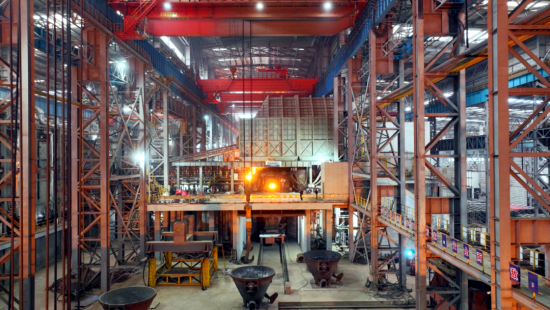【Steel Sector Reform】Accelerating Adoption of EAF Short-Process Routes Across Provinces

With the growth of electric arc furnace steelmaking and the new energy industry, the needle coke market has broad prospects, especially driven by the demand for high-power graphite electrodes.
【Steel Sector Reform】Accelerating Adoption of EAF Short-Process Routes Across Provinces
In January 2025, the Carbon Peak Implementation Plan of Linfen City proposed improving scrap steel recycling and utilization, supporting the development of short-process steelmaking. By 2025, more than 30% of steel capacity is expected to reach energy efficiency benchmark levels, with short-process steelmaking accounting for over 3% of total output.
In February 2025, the Jiangsu Provincial Government issued a set of policies aimed at accelerating the green transformation of economic and social development. The policies emphasize curbing the blind expansion of "high energy consumption, high emissions, and low efficiency" projects. New or expanded projects in the steel, petrochemical, and building materials industries must meet energy efficiency benchmarks and achieve top-tier environmental performance. By 2030, short-process steelmaking is expected to account for no less than 20% of total steel production.

The Guangxi "14th Five-Year Plan" Final Air Pollution Control Action Plan (Draft for Comment) emphasizes clean transformation in Wuzhou's short-process steel sector, covering production processes, organized and unorganized emissions, and daily enterprise management. In Guigang, Guangxi Guigang Iron and Steel Group is undergoing a full-process green transformation and super low-emission retrofit.
The Jiangxi Province Air Quality Improvement Action Plan strictly prohibits new steel capacity, promotes integrated layouts of steel, coking, and sintering operations, and calls for phasing out outdated coking, sintering, pelletizing, and hot-rolling capacity. The province aims to guide long-process blast furnace–converter steelmaking toward EAF short-process steelmaking, targeting 10% of output from short-process routes by 2025.
The Implementation Opinions of the Shaanxi Provincial Government on Deepening Air Pollution Control encourages urban industrial clusters of small and medium-sized traditional manufacturers to upgrade within industrial parks. The plan also seeks to reduce standalone operations like coking and hot rolling. By 2025, short-process steelmaking is targeted to reach 15% of total output.
Anhui Province advocates for the adoption of short-process technologies in the steel, petrochemical, chemical, non-ferrous metals, textile, and machinery industries. By 2030, the utilization rate of major industrial solid waste is expected to remain above 62%, with the short-process steelmaking ratio exceeding 20%.
The Nanchang City Air Quality Improvement Action Plan (Draft for Comment) calls for strict implementation of capacity replacement policies in steel, cement, and flat glass sectors. It encourages Fangda Special Steel to transition to electric arc furnace steelmaking. New projects can only be commissioned after decommissioning the replaced capacity and associated facilities.
The Fuzhou City Carbon Peak Implementation Plan for the Industrial Sector identifies the promotion of EAF short-process steelmaking and hydrogen metallurgy as key tasks. It aims for short-process steelmaking to exceed 15% of total output by 2025. By 2030, breakthroughs are expected in technologies such as hydrogen-rich blast furnaces, shaft furnace direct reduced iron, and carbon capture, utilization, and storage (CCUS).
Feel free to contact us anytime for more information about the EAF steelmaking market. Our team is dedicated to providing you with in-depth insights and customized assistance based on your needs. Whether you have questions about product specifications, market trends, or pricing, we are here to help.
No related results found








0 Replies